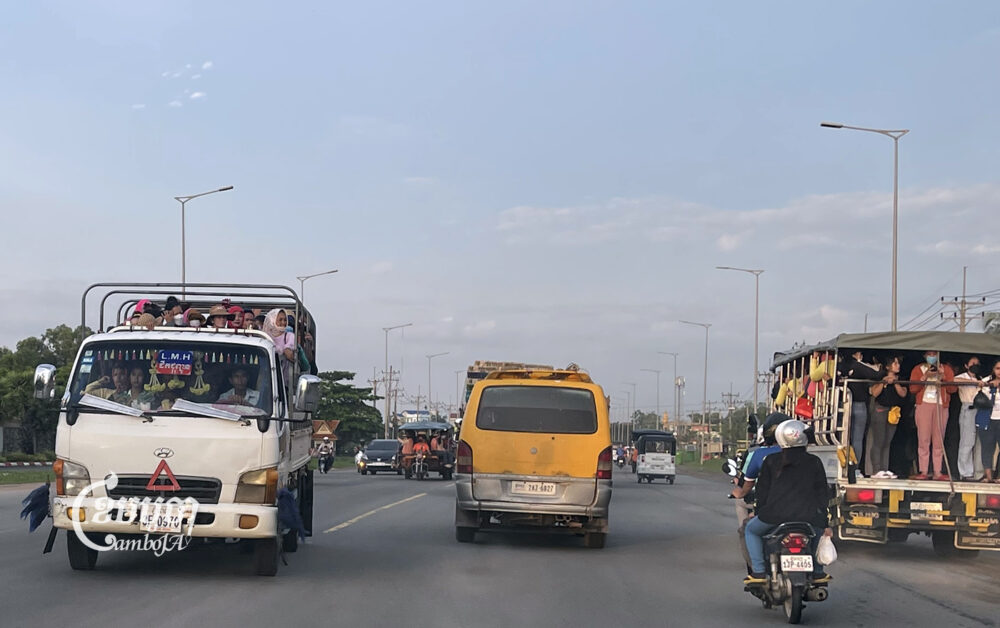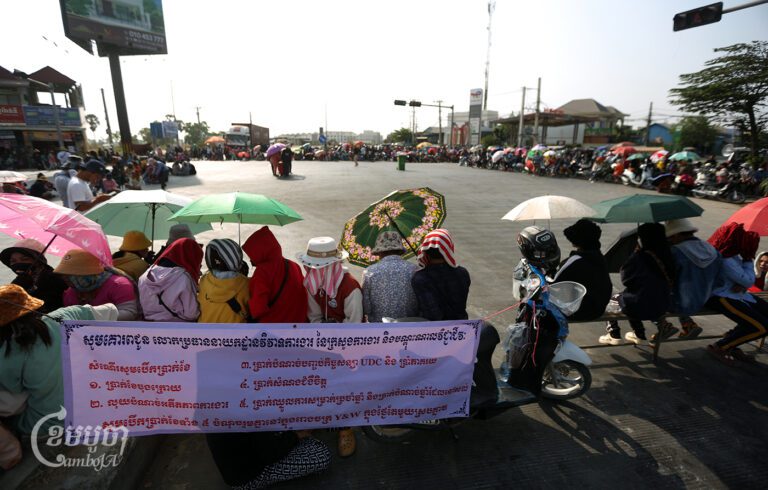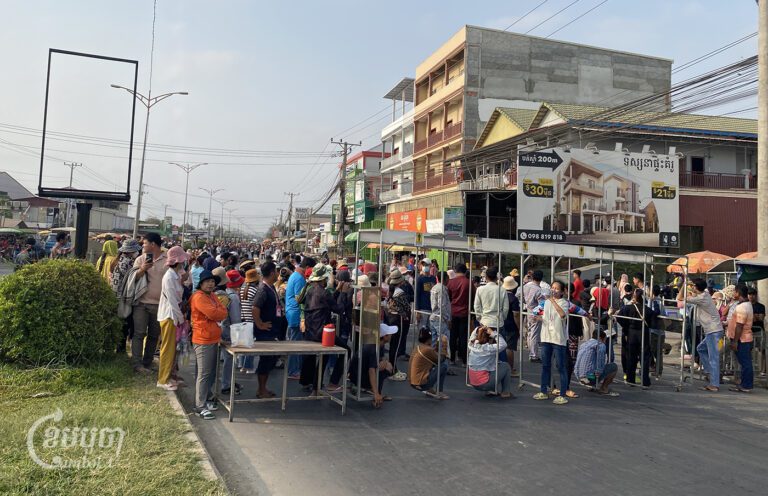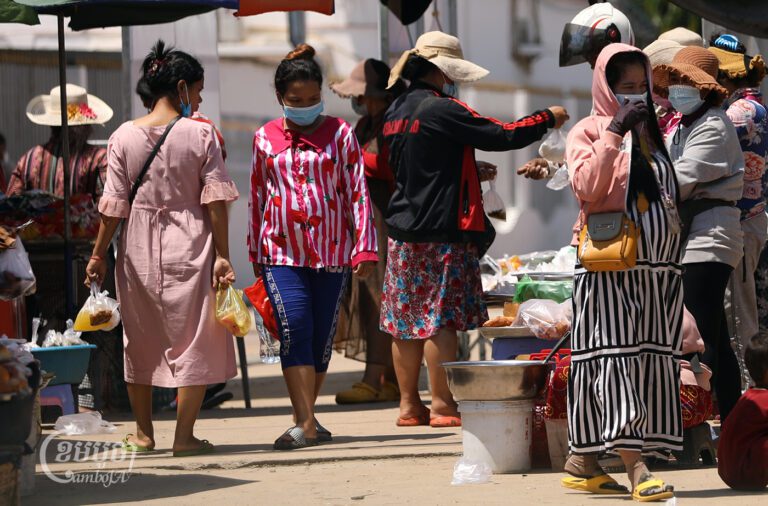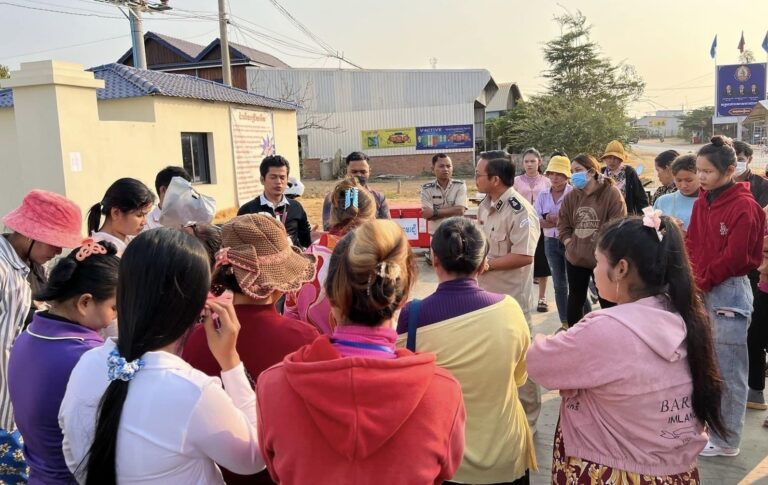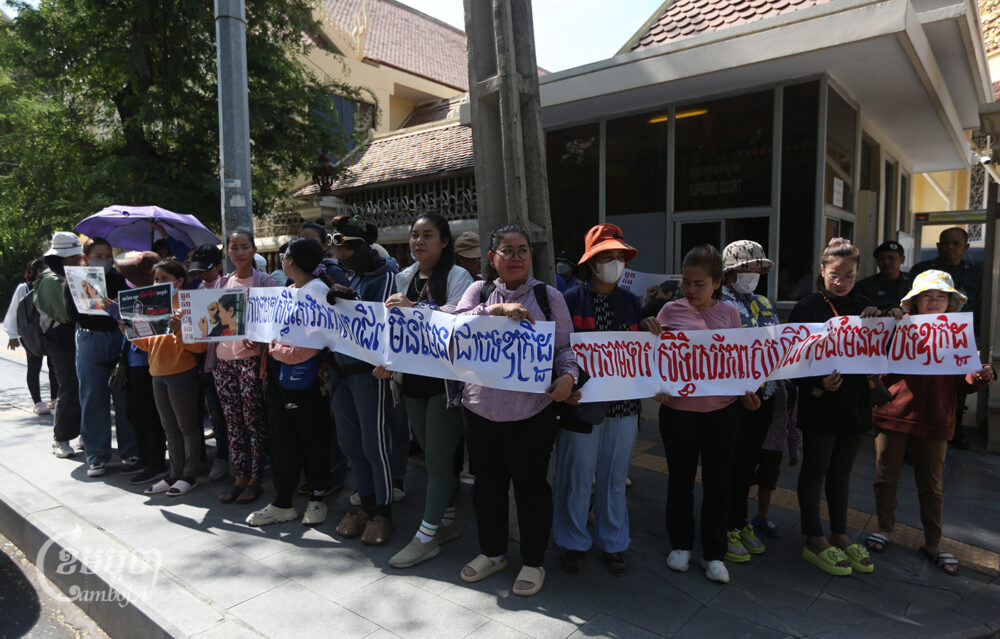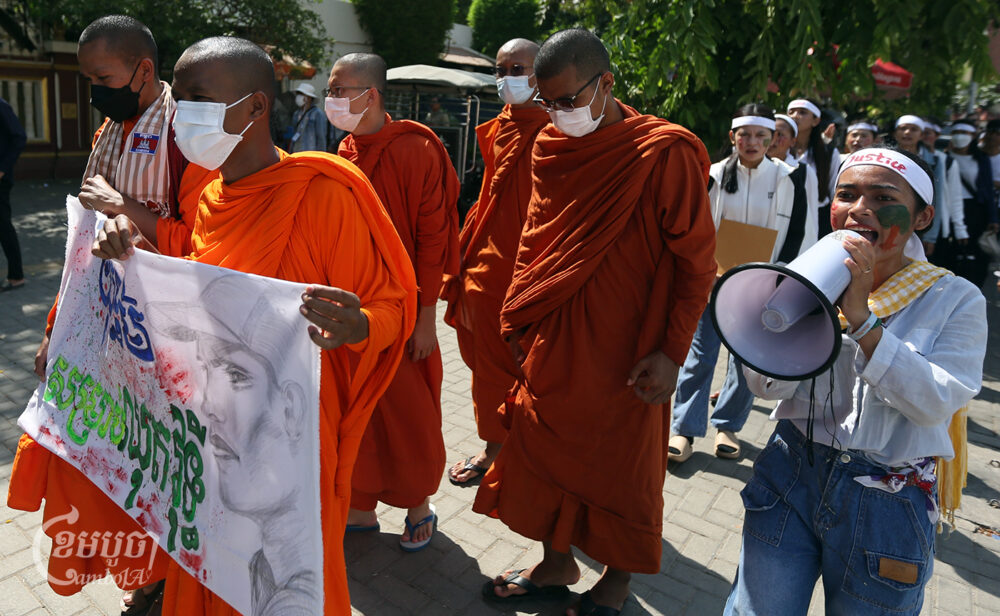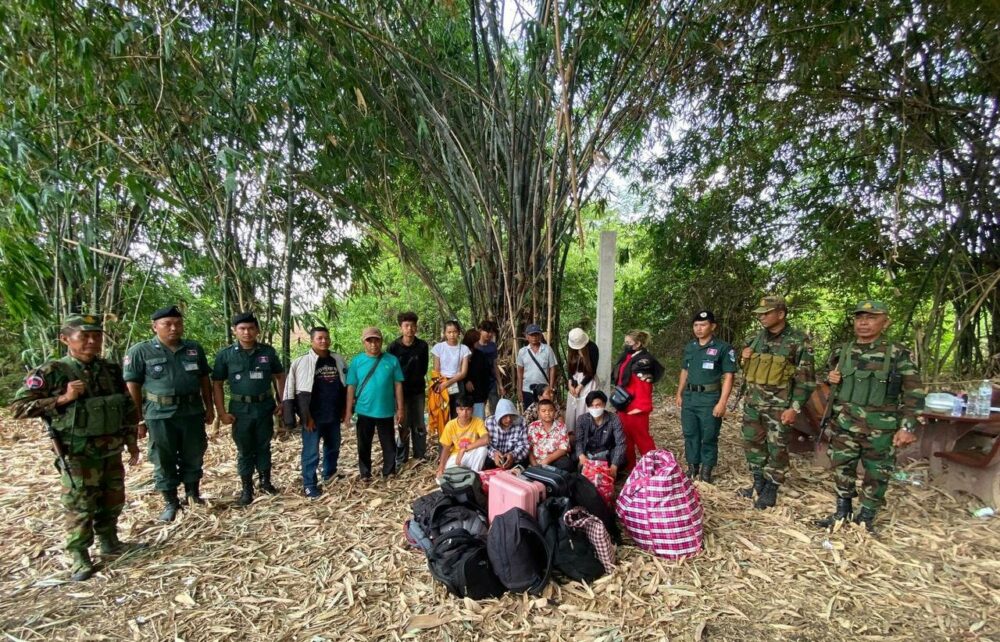Despite a range of efforts aimed at lowering traffic deaths among factory workers, 63 garment workers were killed in 2022, while 156 workers overall died in traffic accidents, according to the National Social Security Fund.
According to data provided by Heng Sophannarith, NSSF deputy director-general and chairman of the Road Traffic Safety Team for Workers, some 854 garment workers were seriously injured and 3,139 received minor injuries in 3,275 accidents last year.
That represents a significant rise from the 2,512 accidents that resulted in 50 deaths, 470 serious injuries, and 1,992 minor injuries that occurred among garment workers in 2021.
Sophannarith said the rise reflected that many factory workers could return to work in 2022 following prolonged COVID-19 lockdowns in 2021.
Garment workers have been particularly prone to traffic accidents, with many having to rely on overcrowded cage trucks and vans for their transportation to and from work. While unions and workers have pushed for safer transport, and the NSSF has called for better trucks, change has been slow to come. For most garment workers, dangerous vehicles remain the only affordable option.
Chhorn Chansoth, 31, pays 55,000 riel per month to commute by cage truck to her garment factory in Kampong Cham province. Prior to the pandemic, as many as 100 workers crowded in for each trip but with only 40 workers regularly riding now, she said it is less stressful.
“I’m still worried whether traveling by motorbike or truck, but when riding a truck it is less worrying because there are friends and the driver drives carefully,” Chansoth said.
Nang Vutha, a driver of a 2.5-ton transport truck in Kampong Cham province, said that local authorities had come to him and told him to swap his cage truck for a car or passenger van but he hasn’t been able to afford the switch.
“I owe a pile of money to the bank just from buying this truck and if I change the car imagine how much I will owe the bank,” he said.
Every day Vutha drives scores of workers to and from their factories. With a number of factories having closed during the pandemic, his passenger numbers are far from stable and these days he only has around 30 regular passengers — each of whom pay 48,000 riel a month.
“They told me to change the car, but most of the drivers for the workers are not able to earn enough money to buy another car.” Vutha said.
Those who can afford it prefer to travel by motorbike, but with so many workers flooding out of factories and onto the roads at the same time, accidents are common.
“It’s not very safe for motorcyclists,” said Lonh La, 31, a garment factory worker in Kampong Cham’s Choeung Prey district who has been driving his own motorbike to work for six years and said he has been involved in multiple traffic accidents.
“In the past, there were frequent traffic accidents… As far as I can see, not many of them [factory workers] obey the law as when they are leaving work, they are riding their motorbike all over the place.”

Kim Pagna, country director of road safety NGO AIP Foundation, said that while some improvements have been made to garment worker transport in recent years, many cage trucks had yet to be replaced and remained a common means of transport.
He urged the government to promote a traffic safety policy for all factories across the country, focusing on factories along the national road first.
Neak Heng, President of the Transport and Informal Work Association, said that due to the pandemic and general economic struggles, most truck drivers have been unable to switch to safer vehicles.
“There are very few cars that have been modified according to technical standards, but if in the future the traffic laws are strict, the drivers will have to comply,” he said.
Ek Phoeun, who drives a worker transport bus in Kampong Cham province, said he changed only because the police and the traffic police called him for a meeting four years ago and told him he must get rid of his cage truck.
He spent nearly $7,000 to get a 35-seat bus that meets safety standards. Each passenger pays around 60,000 riel a month.
Phoeun said many of his fellow drivers had yet to change because of the significant cost.
“If they have a cage truck, they can carry more people than us… If you change from a truck to a bus, you will have to pay more. So they still use it because they [authorities] do not restrict it completely.”
Kong Athit, president of the Coalition of Cambodian Apparel Workers Democratic Union (CCAWDU), said that the decision to change vehicles depends on both budget and education.
“If he understands better, he will try to find a way to change, but if he still faces financial constraints, it is a problem,” he said.
“We need encouragement from various development parties in the field. If he [the driver] is alone, it is a bit difficult because, as you know, he [must] borrow money from the bank to buy a car.”
Min Manvy, Transport Ministry secretary of state and secretary-general of the National Road Safety Committee (NRSC), said that the relevant ministries and institutions were working to improve road safety but admitted there were economic obstacles.
“The government and its partners are working and there are changes gradually. The government and the SPDC are encouraging and educating, but it can not be done immediately,” she said.
She estimated that about half the number of riders have been able to change from cage trucks to another means of transportation. But with many of them purchasing their own motorbikes, there has also been a rise in moto accidents.
“There needs to be more education when they’re using their own motorcycle, it is a lot, so it needs a lot of education.”


